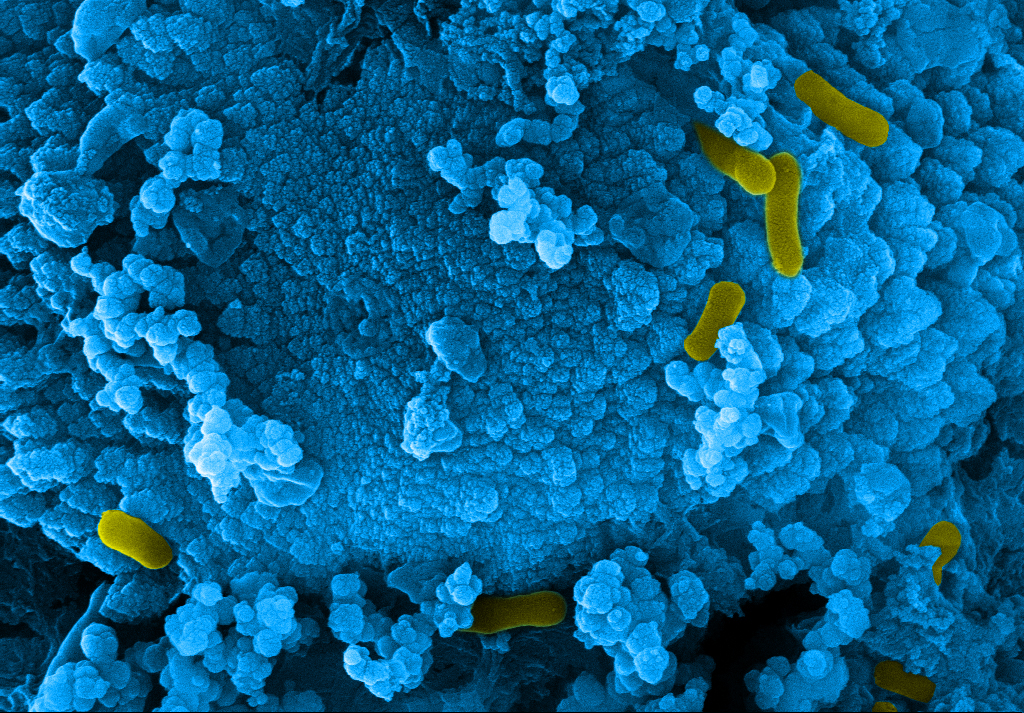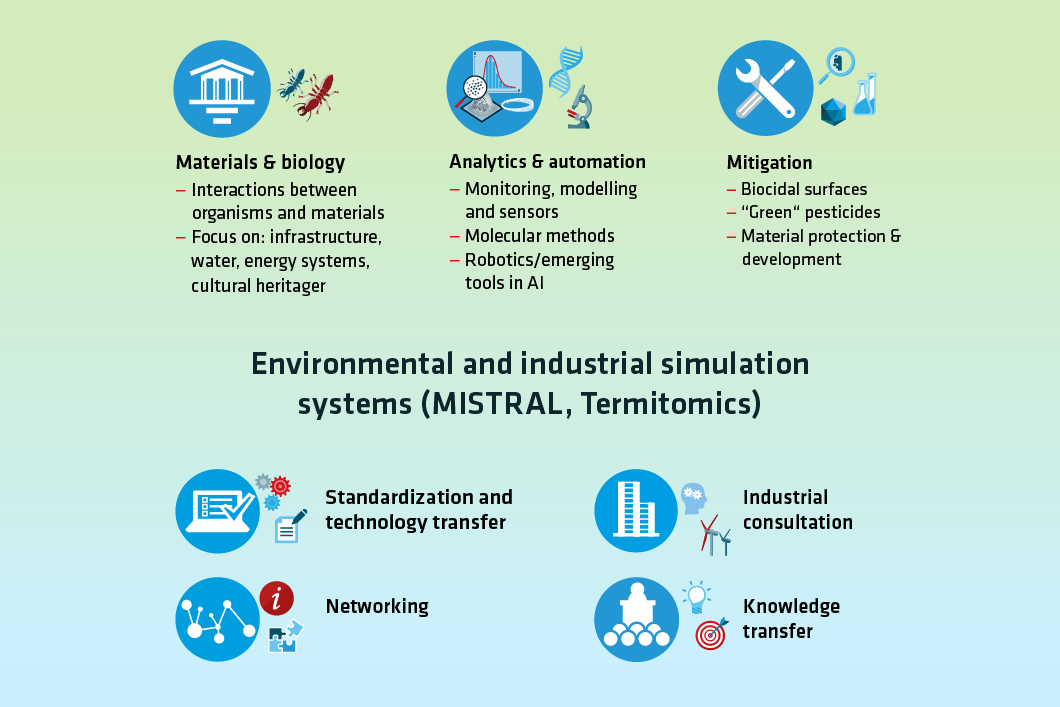
Microbiologically influenced corrosion affects all materials. BAM's research is interdisciplinary and embedded in a global network.
Source: BAM
Materials such as polymers, wood, metals, ceramics, and concrete are indispensable to society with a variety of critical applications such as construction and energy infrastructure. However, over time, these materials can be damaged or deteriorate. Wood, for example, is increasingly being turned to as a lightweight and sustainable alternative to energy-intensive materials such as concrete. However, it can be degraded by fungi or insects, such as termites, under suitable conditions. Conventional materials such as metal and concrete can also be negatively affected by biological processes such as microbiologically influenced corrosion (MIC).
The Federal Institute for Materials Research and Testing addresses the challenges posed by biologically influenced or induced corrosion. We develop testing methods that detect biologically mediated corrosion and the effectiveness of mitigation measures; we also examine the durability of materials. Methods are being developed to detect damage early, using sensors and non-destructive testing as well as develop automated methods for high-throughput analytics. The biological "culprits" for degradation are identified using cutting edge molecular approaches. Another goal is the pursuit of pathways to durable materials as well as sustainable mitigation measures. The institute’s research on biocorrosion is interdisciplinary and embedded in a global network of scientific and industrial partners.
Biocorrosion’s Mission
- Rapid and efficient identification of harmful organisms in the case of damage
- Detection of underlying mechanisms
- Development of methods and monitoring measures for preventive risk assessment
- Developing automated experimental testing systems to examine and prevent the negative societal impacts of biocorrosion.
Although researchers have long been aware of biocorrosion, the processes underlying negative interactions between organisms and materials are often poorly understood. Biology is highly complex and develops differently depending on the environmental factors, material composition and critically, the biology of the causative agent (the organism). A further complication is ongoing environmental pollution and climate change, which may directly enhance biological damage or lead to the spread of invasive species. Biological processes typically accelerate at higher temperatures, and pollutants can serve as a nutrient source for microorganisms, leading to increased biomass and potentially, negative synergistic outcomes.
Wood and wood protection pose a particular challenge in a warming world, with biocide resistance and environmental safety of mitigation products also coming into play. For example, measures to protect materials against biological attacks are not always effective and can, in the worst case, have negative consequences for humans and nature. Furthermore, faster material failure – triggered by biological activity –, such as in the case of gas pipelines, could pose a significant safety risk.

Our focus in the area of biocorrosion
Source: BAM
Services and competencies in the field of biocorrosion:
- Automated platforms mimicking natural processes on laboratory scale to simulate high flow (HI-Tension project), high pressure (MISTRAL project), and termite behavior (TERMITOMICS Project)
- Failure investigations, field sampling and consultancy for corrosion assessments, including microbially influenced corrosion (MIC) expertise
- Basic research to elucidate biocorrosion mechanisms
- Development of modeling and prediction models (EU project Bluepartnership: CORRASBlue)
- Analysis of corrosion products, surface characterization, and corrosion rates via weight loss measurements and damage assessments
- Investigation of microbially influenced corrosion in caverns for hydrogen storage and in repositories for nuclear waste
- Analysis of microbially influenced corrosion in additive manufacturing
- Monitoring of influential environmental parameters (temperature, pH value, oxygen, sulfide/sulfate content, gas composition, etc.) using special sensors
- Multielement single-cell analysis
- Fluorescence microscopy, such as confocal laser scanning microscopy and epifluorescence microscopy
- High-throughput sequencing, including long-read based technologies such as ONT and PacBio HiFi, as well as crosslinking approaches such as Hi-C (DFG projects: GEvol and Insect Infect).
- Verification of mitigation measures for effectiveness
- Participation in international standardization developments
Selected projects
MIC: HI-Tension
Mi-MIC: Corrosion products
Fungi: weathering of iron silicates
MIC in the repository
Additive Manufacturing and MIC
MIC: Hydrogen storage in salt caverns
MIC on welded joints
Euro-MIC - European Network for MIC Management – New paths for science, sustainability and standards
Find BAM research projects in the ReSEARCH BAM database


